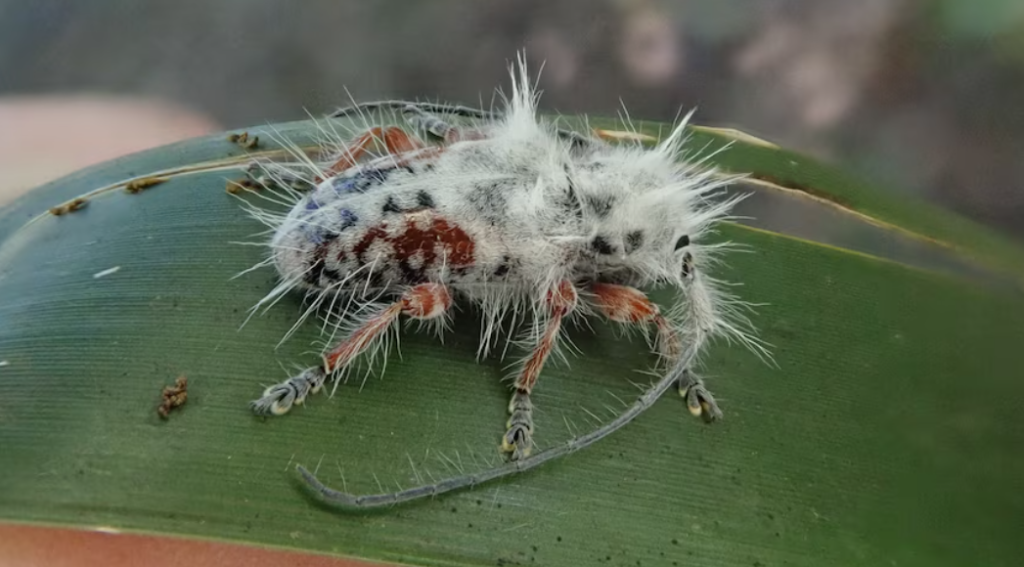A Queensland researcher spotted the fluffy specimen by chance while camping and initially mistook it for bird droppings.
Others are reading now
Australia’s wilderness has once again proven to be a treasure trove of undiscovered species, with the latest find being a small yet remarkable beetle, nicknamed the “punk beetle” due to its distinctive appearance.
Discovered by University of Queensland researcher James Tweed in Leamington National Park, this beetle, less than a centimeter long, sports long white spiky hairs, giving it an unmistakably punk rock aesthetic.
Initially mistaking it for bird droppings, Tweed’s curiosity led him to a closer examination, revealing the beetle’s unique black-orange body beneath its punk-inspired hairstyle.
“I saw this white thing on the leaf and walked past, thinking maybe it was bird droppings. But something in my brain told me to turn around. And there was this pretty spectacular bug sitting right next to my tent,” said the entomologist.
Also read
The body of the insect was black-orange in color, but it was the white hairs that made it special.
“Many of the hairs stuck out almost vertically, giving them a mohawk look,” Tweed added.
It was not easy for the scientist to identify the beetle, because he had “never seen anything like it.” It turned out that Tweed had discovered not only a new species of long-nosed beetle, but also a new genus or group of insects.
“Species within the same genus are very closely related to each other, and in this case we do not believe that any of the previously discovered species are related,” the researcher noted.
According to Adam Slipinski of the Australian National Insect Collection, it was very difficult to determine the function of the beetle’s hairs, as no similar specimens have been found.
He observed that, akin to 1970s punk rockers, this beetle species is most active at night, suggesting the hairs might serve as camouflage.
“During the day, they have to somehow survive in order not to be noticed by birds, lizards or other predators. Perhaps with the help of this camouflage, the beetles are trying to be similar to bird droppings, or perhaps it is covered with a fungal infection,” Slipinski explained.
Another hypothesis suggests the barbed hairs might function like a cat’s whiskers, enhancing the beetle’s environmental awareness. The beetle has been named Excastra albopilosa, with “Excastra” meaning “from the camp” and “albopilosa” translating to “white and hairy” in Latin.


